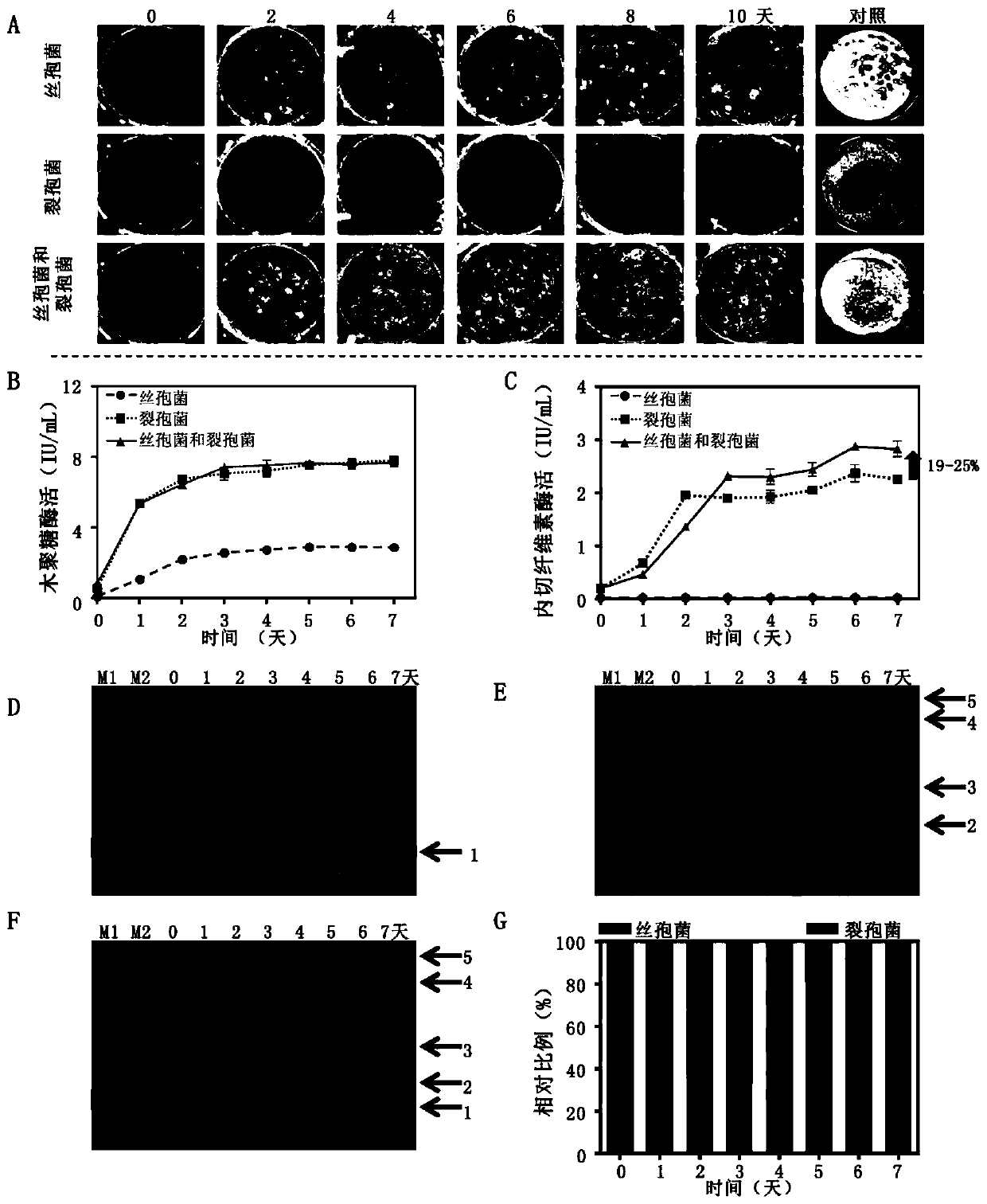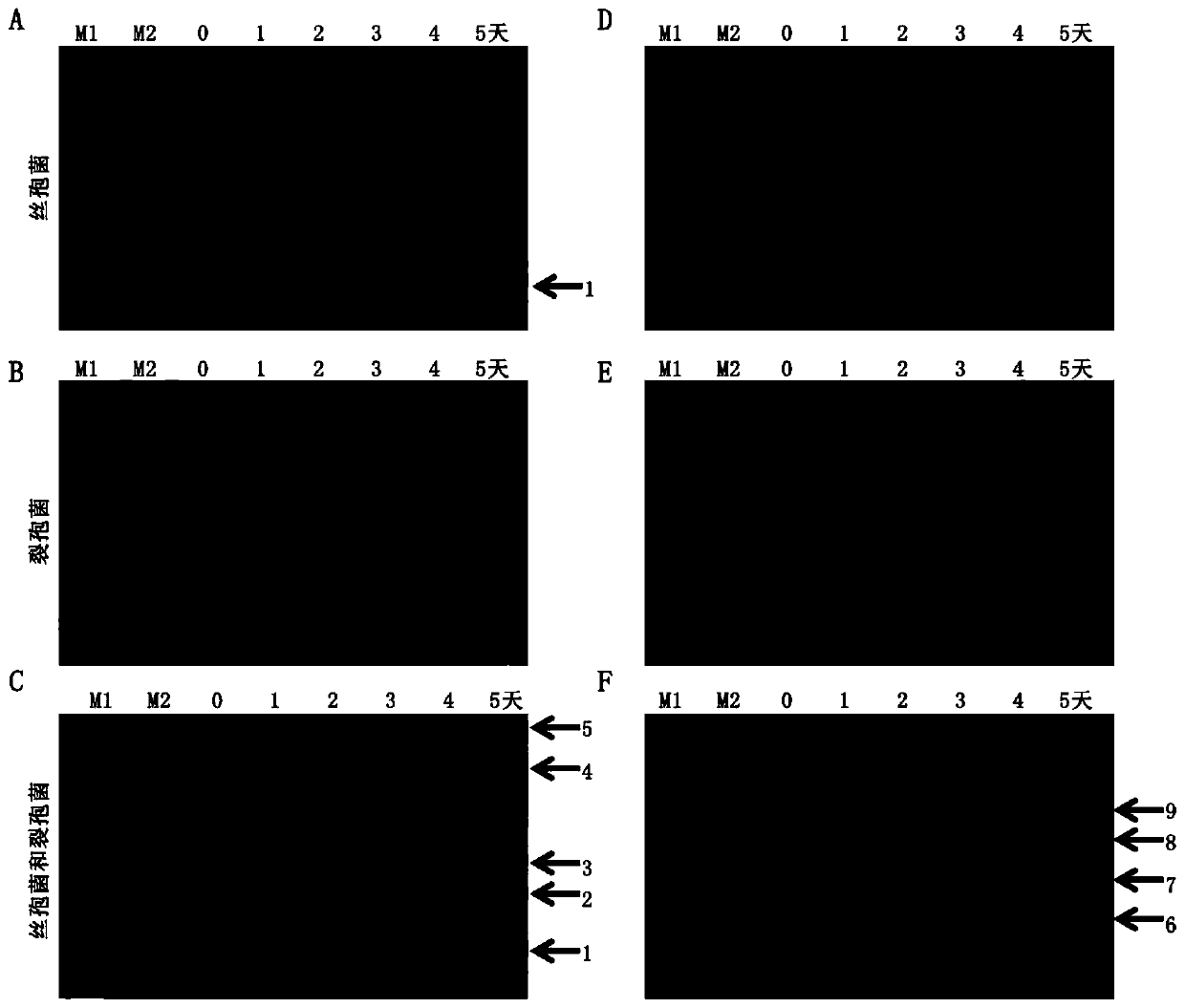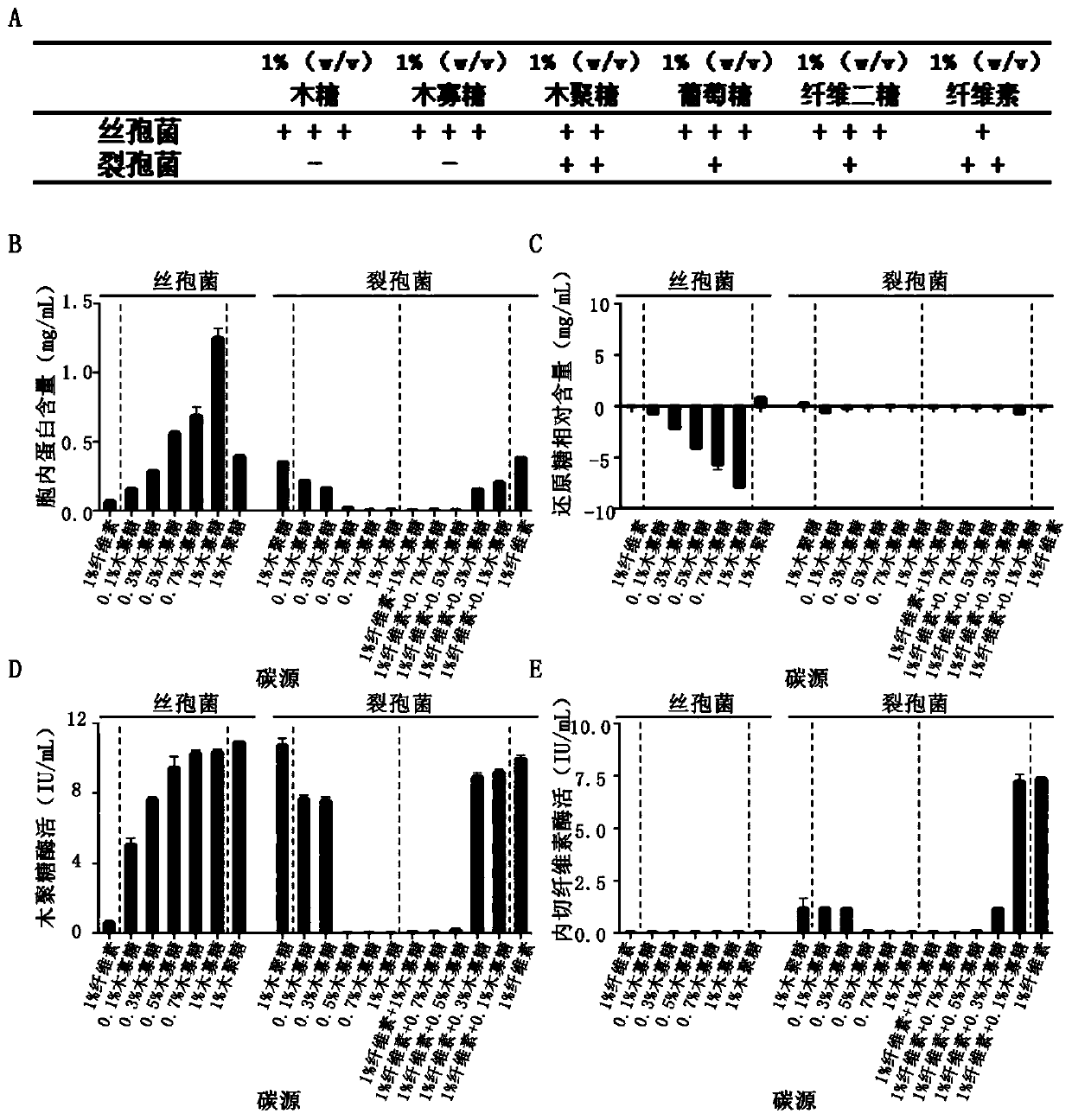Method for promoting degradation of agricultural waste by thermobifida fusca
A thermophilic fungus and thermal cracking technology, applied in the field of microorganisms, can solve the problems such as the inability to degrade lignocellulose by a single enzyme and increase the cost.
- Summary
- Abstract
- Description
- Claims
- Application Information
AI Technical Summary
Problems solved by technology
Method used
Image
Examples
Embodiment 1
[0031] Embodiment one, material and method
[0032] 1. Materials and strains
[0033] Cellulose, cellobiose, glucose, xylooligosaccharide, xylose and NaCNBH3 were all purchased from Shanghai Sangon Biotechnology Co., Ltd. (Ltd.Shanghai, China). Xylan, 7-amino-1,3-naphthalene disulfonic acid monohydrate, trichloroacetic acid, dithiothreitol (DTT), iodoacetamide, and trypsin were purchased from Sigma Chemical Co. (St.Louis, MO, USA). All other chemicals used were of analytical grade.
[0034] Thermomyces lanuginosus (Thermomyces lanuginosus) can be conventional Thermomyces lanuginosus in the field, such as the Thermomyces lanuginosus in the Chinese invention patent with patent application number: 201810018260.X. Thermobifidafusca DSM10635 was purchased from the German Culture Collection.
[0035] 2. Solid state fermentation and protein extraction
[0036] Thermomyces lanuginosus and Thermosporium tan were cultured in PDA and Chapei medium at 55°C for 2 days as strains. Mix...
Embodiment 2
[0045] Embodiment 2. Cultivating Thermomyces lanuginosus and Brown Thermophilia on corn stalk medium
[0046] Selecting corn stover as a carbon source to mimic natural habitats. When Thermomyces lanuginosus was cultured alone on the solid medium of corn stover, white mycelia could be detected, while Thermospora lanuginosus could not grow alone on the solid medium of corn stover ( figure 1 A).
[0047] More white mycelia and four bands of xylanase secreted by T. tanensis ( figure 2 Middle bands 2-5) and four bands of cellulase secreted by Thermobista spp. ( figure 2 Middle bands 6-9); that is to say, when Thermomyces lanuginosus and Thermomyces lanuginosus are co-cultured, they can secrete a large amount of xylanase and cellulase ( figure 2 ).
[0048] In corn stover liquid medium, both Thermomyces lanuginosus and Thermospora brownus can secrete xylanase, but compared with pure culture, the xylanase activity of the two co-cultured was not significant. Increase( figure ...
Embodiment 3
[0050] Growth and enzyme secretion characteristics of embodiment three, thermomyces lanuginosus and brown thermophilic bacterium when cultured alone
[0051] Xylan and cellulose are polymers of xylose or glucose and are the most abundant components of plant material. With xylan and cellulose-related substrates (1% xylose, 1% xylooligosaccharides (xylooligosaccharides), 1% xylan, 1% glucose, 1% cellobiose and 1% microcrystalline cellulose ( cellulose), mass / volume) as a carbon source for pure culture. Thermomyces lanuginosus grew on all substrates, but 1% xylose (mass / volume) and 1% xylo-oligosaccharides (mass / volume) inhibited the growth of Thermomyces lanuginosus ( image 3 A).
[0052] The concentration gradient of xylooligosaccharides and their mixtures with cellulose were used to culture Thermomyces lanuginosus and Thermobispodium browni, respectively. For pure cultures of Thermomyces lanuginosus, as the concentration of xylooligosaccharides increased from 0.1% to 1% (...
PUM
 Login to View More
Login to View More Abstract
Description
Claims
Application Information
 Login to View More
Login to View More - R&D
- Intellectual Property
- Life Sciences
- Materials
- Tech Scout
- Unparalleled Data Quality
- Higher Quality Content
- 60% Fewer Hallucinations
Browse by: Latest US Patents, China's latest patents, Technical Efficacy Thesaurus, Application Domain, Technology Topic, Popular Technical Reports.
© 2025 PatSnap. All rights reserved.Legal|Privacy policy|Modern Slavery Act Transparency Statement|Sitemap|About US| Contact US: help@patsnap.com



